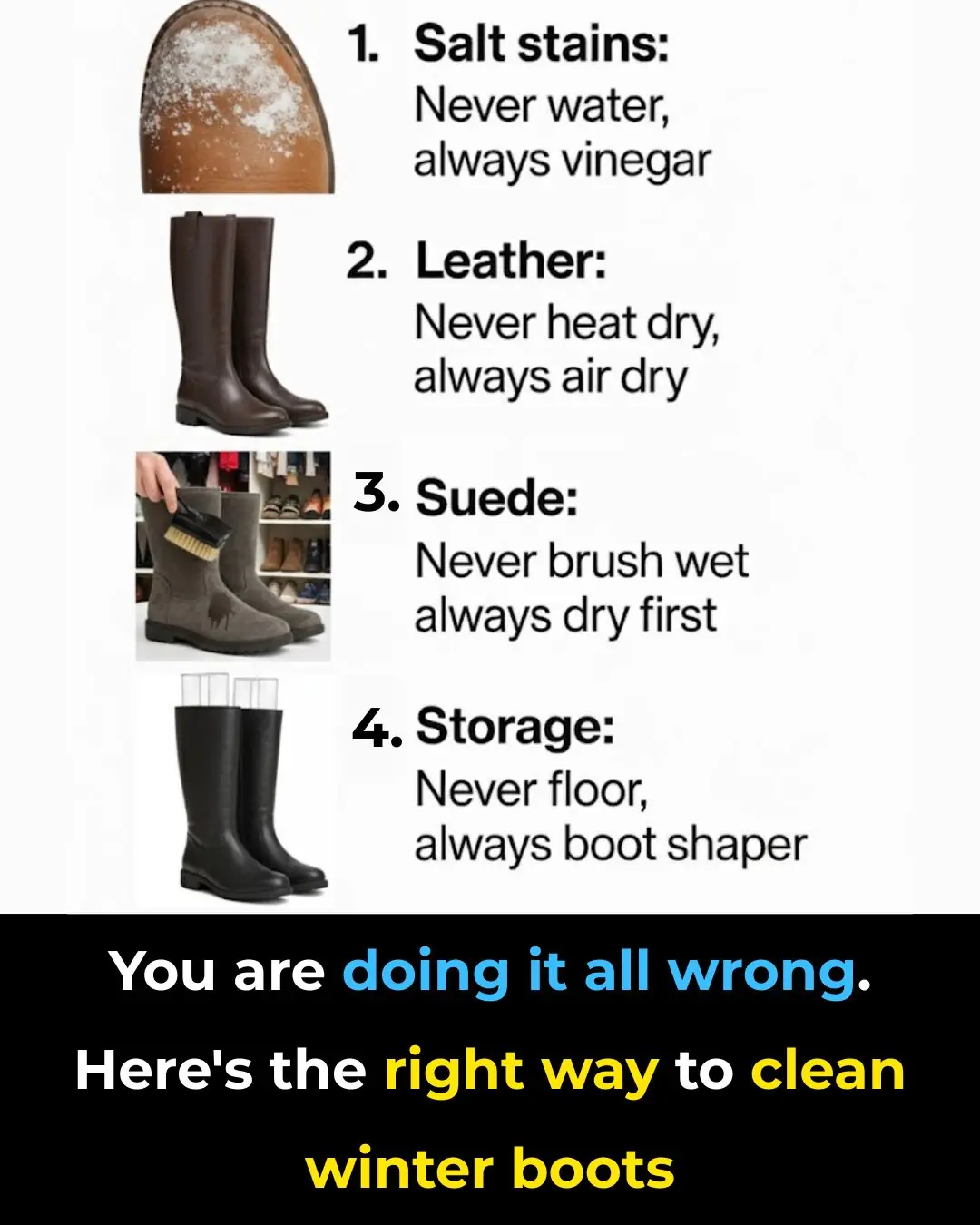
You are doing it all wrong. Here’s the right way to store winter coats
Winter coats are essential wardrobe staples, offering both warmth and style during the colder months. However, many people inadvertently damage these garments by storing them incorrectly, which shortens their lifespan and diminishes their appearance. By following proper storage techniques, you can significantly extend the life of your coats, keeping them in excellent condition for many winters to come.
In this article, we will guide you through the best practices for storing winter coats. From understanding the specific requirements of different fabrics to implementing practical and space-saving storage solutions, you’ll learn how to preserve the quality of your coats season after season. Whether your coat is made from wool, down, or leather, knowing how to care for it during the off-season can make a noticeable difference in its longevity and appearance.
1. Understanding Fabric Needs: Wool, Down, and Leather
Each fabric type has unique storage requirements. Wool, for instance, needs protection from moths and sufficient space to maintain its natural shape. Down coats must be stored in a way that preserves their loft and insulating properties. Leather coats, meanwhile, are sensitive to both moisture and heat, which can cause cracking, fading, and stiffness over time.
To care for these materials properly, it’s essential to understand their characteristics:
-
Wool: A natural fiber prone to moth damage. Use cedar blocks, lavender sachets, or other natural moth repellents in your storage space.
-
Down: Filled with feathers that can lose loft if compressed. Avoid vacuum-sealed bags and instead opt for loose storage on wide hangers or in breathable bins.
-
Leather: Sensitive to temperature and moisture. Store in a cool, dry area away from sunlight, and use a leather conditioner before storage to maintain flexibility.
By understanding these material-specific needs, you can prevent common problems such as odor, shrinkage, and fabric deformation.
2. Why Wool Needs Breathing Space
Wool benefits from airflow, which helps prevent mold, mildew, and unpleasant odors. When storing wool coats, ensure there is enough space between garments to allow air circulation. Overcrowded closets can lead to creases and fabric damage that are difficult to remove later.
Use padded hangers to maintain the coat’s shape and avoid shoulder dimpling. Keep the closet dry and cool, ideally around 50% humidity. Avoid plastic garment bags, which trap moisture, and opt for breathable cotton or canvas covers instead. Adding a few cedar blocks can also help repel moths while keeping your coat fresh.
3. The Right Way to Store Down Coats
Down coats require careful handling to maintain their fluffiness and warmth. Compressing a down coat into a tight space or vacuum-sealed bag can flatten the feathers, reducing its insulating ability.
Instead, hang down coats loosely on wide hangers or store them in a large breathable garment bag. If closet space is limited, you can gently fold the coat and place it in a breathable storage bin, ensuring it’s clean and completely dry before storage. This prevents mold growth and keeps the coat smelling fresh. Occasionally shaking the coat during storage can also help maintain loft.
4. Leather Care: Avoiding Moisture and Heat
Leather coats are particularly vulnerable to environmental damage. Excessive heat or moisture can cause cracking, fading, and warping. Store leather in a stable, cool, dry environment away from direct sunlight.
Apply a high-quality leather conditioner before storage to maintain suppleness. Use wide, padded hangers to preserve the coat’s shape, and cover it with a breathable cotton garment bag rather than plastic, which traps moisture and can encourage mold growth. Regularly inspecting your leather coat can help you catch minor issues before they become serious.
5. Proper Use of Garment Bags for Wool Coats
Garment bags protect wool coats from dust and pests, but it’s important to choose the right type. Avoid plastic bags, which can trap moisture, and use cotton or canvas alternatives.
Before storing, make sure the coat is clean and stain-free, as stains can set permanently over time. Adding cedar blocks or lavender sachets inside the bag helps repel moths and keeps the coat smelling pleasant.
6. Flat Storage Techniques for Down Coats
When hanging space is limited, flat storage is an effective option for down coats. Lay the coat flat, making sure it’s clean and dry, and fold gently without compressing the feathers.
Use breathable storage bins or cotton bags to protect against dust while allowing airflow. Avoid placing heavy items on top, as this can compress the feathers and reduce loft over time. For added protection, consider layering the coat with acid-free tissue paper.
7. Optimal Closet Conditions for Leather
Leather coats thrive in stable conditions: temperatures between 60–70°F and humidity around 40–50% are ideal. Fluctuations can cause leather to expand and contract, leading to cracks.
Using dehumidifiers or silica gel packets can help maintain proper humidity. Ensure the closet is ventilated to prevent musty odors, and check the coat regularly for signs of mold or mildew. Proper closet lighting (indirect and soft) can also help prevent fading.
8. The Importance of Closed Zippers
Keeping zippers closed during storage helps preserve the coat’s shape and prevents fabric distortion. This is especially important for down and wool coats, where an open zipper can lead to stretching or misalignment.
Before storing, zip up all zippers and fasten buttons or snaps. This simple step prevents unnecessary stress on fabric and hardware, helping your coat maintain its original fit.
9. Avoiding Common Mistakes in Coat Storage
Common mistakes include storing coats in damp areas, using improper hangers, and folding incorrectly. These habits can lead to mold, mildew, and fabric deformation.
Always ensure coats are clean and dry before storage. Use padded hangers for wool and leather coats and avoid compressing down coats. Regularly inspect stored coats for damage or pests and address issues immediately. Small preventive measures now can save your coats from long-term damage.
10. Viral Hacks That Actually Work
Some viral storage tips are gimmicky, but a few genuinely work:
-
Pool noodles as shoulder shapers: These help maintain the coat’s structure without causing dimpling.
-
Activated charcoal packets: Absorb moisture and odors naturally, making them ideal for humid climates or older homes.
Other creative solutions include using rolled-up scarves inside coat sleeves to maintain shape or placing lavender sachets to keep stored coats smelling fresh.
11. Long-term Storage Solutions for Winter Coats
For long-term storage, investing in a dedicated garment storage system is worthwhile. Adjustable shelving with ample hanger space accommodates different types of coats.
If your home doesn’t have suitable conditions, consider a climate-controlled storage unit. These units maintain consistent temperature and humidity, providing ideal conditions for delicate fabrics. Clearly label bins and bags so you can easily retrieve your coats when the season returns.
By following these tips, you’ll keep your winter coats in excellent condition year after year, saving money and preserving your style for winters to come.
News in the same category


You are doing it all wrong. Here’s the right way to defrost your freezer

This is new information to me!

You are doing it all wrong. Here’s the right way to clean winter boots

Why should you bury garlic in a rice bin? Special benefits, every home needs it

Washing machine smells bad, mold appears: Do this to clean it, save money calling a technician

Rice cookers have 4 places that need to be cleaned regularly, the cleaner they are, the less electricity they use.

Chef reveals: To boil crispy, crunchy, non-bitter white pig intestines, you only need one ingredient.

7 safe and effective ways to get rid of ants from your house. Anyone with a lot of ants should learn from these.

Growing chili peppers with only plain water: The plants are stunted and yellow, using this water will produce heavy fruit.

Tips to drive cockroaches out of your house with easy-to-find ingredients, effective and extremely safe

No Need for a Sharpening Stone: Just One Simple Trick to Make Your Dull Kitchen Knife as Sharp as New

My nana taught me this hack to make hair shiny in 3 mins with 0 work. Here’s how it works

🕷️ Say Goodbye to Pests: A Natural Bathroom Trick That Helps Repel Insects

You are doing it all wrong. Here’s the right way to store batteries

Haven't heard that before

My nana taught me this hack to remove oven grease in 4 mins with 0 work. Here’s how it works

Lady places cup of vinegar into microwave. Here’s the genius reason why
News Post

Clove Flaxseed Rose Water Toner: Better Than Botox

🧴 Pimples on Your Lips? What It Really Is & How to Treat It Safely

You are doing it all wrong. Here’s the right way to clean your coffee maker

You are doing it all wrong. Here’s the right way to defrost your freezer

This is new information to me!

You are doing it all wrong. Here’s the right way to clean winter boots

Why should you bury garlic in a rice bin? Special benefits, every home needs it

Washing machine smells bad, mold appears: Do this to clean it, save money calling a technician

Rice cookers have 4 places that need to be cleaned regularly, the cleaner they are, the less electricity they use.

Chef reveals: To boil crispy, crunchy, non-bitter white pig intestines, you only need one ingredient.

7 safe and effective ways to get rid of ants from your house. Anyone with a lot of ants should learn from these.

3 ways to make delicious green chili sauce and red chili sauce that everyone can learn

Growing chili peppers with only plain water: The plants are stunted and yellow, using this water will produce heavy fruit.

Tips to drive cockroaches out of your house with easy-to-find ingredients, effective and extremely safe

Ghost the Giant Pacific Octopus Captures Hearts in Her Final Moments

Collagen booster night cream!!

How China is Reshaping Online Influence Through New Rules

5 Extremely Harmful Cooking Oil Habits That Slowly Poison Your Body
